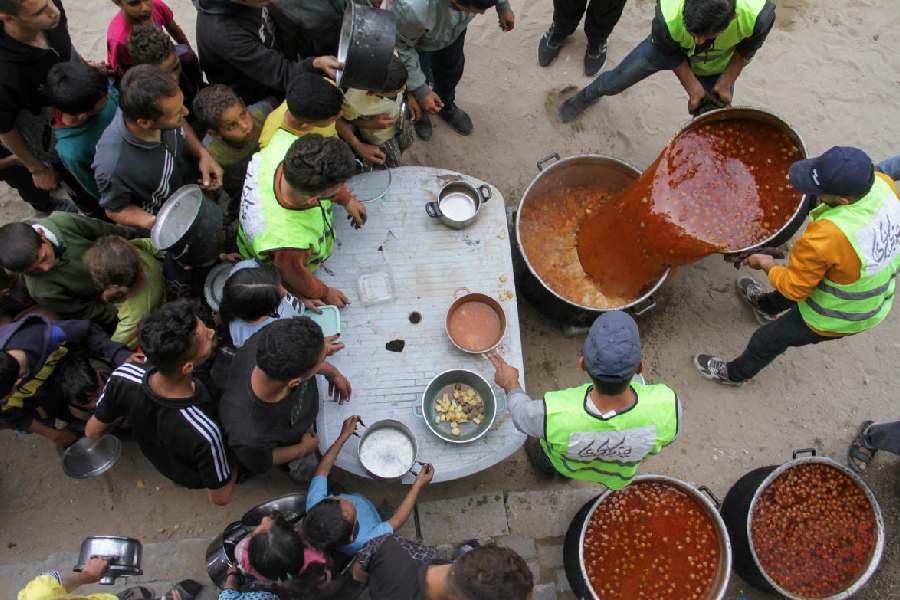.jpg)
New Delhi: An IIT Kanpur professor has alleged that the newly launched Prime Minister's Research Fellowship, with its high stipends and research grants, discriminates in favour of the central tech schools' students rather than benefiting all bright scholars across institutions.
"Is IIT mafia at work here?" Dheeraj Sanghi, who teaches computer science at IIT Kanpur, wondered in his blog on Sunday, a day after the human resource development ministry rolled out the scheme.
Under the PMRF, students who have completed or are in the final year of BTech, Integrated MTech or Integrated MSc at IISc Bangalore or the IITs, NITs, IISERs and the central IIITs can secure direct admission to PhD programmes in the IITs and the IISc if they satisfy two conditions.
One, they must have secured more than 8 Cumulative Grade Points Average (CGPA) - awarded on the basis of students' performance in their semester exams - during their BTech programme. Two, they must clear an interview where they will be asked about their research plans. Up to 1,000 students are expected to be granted the fellowship a year.
The fellowship is worth Rs 70,000 a month for the first two years, Rs 75,000 a month in the third year and Rs 80,000 a month in the fourth and fifth years. Besides, each fellow is eligible to receive a yearly research grant of Rs 2 lakh.
This is far higher than the monthly stipend of Rs 25,000-28,000 and the contingent annual grant of Rs 20,000 that scholars now receive under the Junior Research Fellowship (JRF) scheme, which selects its beneficiaries through the National Eligibility Test.
Sanghi has questioned the logic of confining the PMRF to the students, current and former, of the 60-odd centrally funded technical institutions (CFTIs). He says the IIITs in Hyderabad and Delhi - left out of the scheme because they are run by state governments and not the Centre - as well as BITS Pilani and Jadavpur University provide better undergraduate education, at least in computer science, than many of the NITs.
"The government should be bold enough and admit that this is to help the CFTIs and not about quality," he has written.
Sanghi has further asked why the scheme is not open to those who have completed, or are doing, ordinary MSc or MTech courses. He believes the scheme unduly favours those who cleared the Joint Entrance Examination, though which the CFTIs select students for their BTech and integrated master's courses.
According to Sanghi, many of the ordinary MTech students at IIT Kanpur are better prepared for PhD courses than BTech graduates from any premier tech school. He has also questioned the decision to allow only the IITs and the IISc to host PMRF scholars.
"I would guess that the IISERs, Tata Institute of Fundamental Research, Chennai Mathematical Institute, Indian Statistical Institute, would have stronger research programmes in science than most IITs," he has written.
"IIIT Hyderabad and IIIT Delhi would have stronger research programmes in computer science than most IITs. Why are we forcing the cream of the nation to do research in second-best colleges?"
Sanghi has argued that the alleged CFTI-preference built into the PMRF would result in some of the better researchers receiving far lower stipends and grants than scholars inferior to them.
For instance, he says, of the 250 PhD students that IIT Kanpur admits every year, only a small number would be expected to receive the PMRF. However, he adds, it's entirely possible that some of the non-PMRF scholars would outperform their PMRF counterparts.
There will be a situation, therefore, where "those who do better research get paid less and those who do worse research get paid more", he argues.
"The goal of the scheme is to encourage PhD research. The scheme will only end up discouraging a large number of excellent students from doing PhD."
Sanghi has pointed out another anomaly: the PMRF scholars' yearly grant of Rs 2 lakh is double the research grant that IIT teachers are eligible for.
Sanghi told The Telegraph that the best way to reward talent was the procedure followed by the Visvesvaraya PhD Scheme that the department of electronics and IT had started six years ago, only to drop it after four years.
That scheme offered a stipend marginally higher than the JRF's and was available only to first-year PhD students - who had already shown glimpses of their talent - of the CFTIs and other accredited tech schools, including top private institutions.
It did not require the beneficiaries to have obtained their undergraduate or postgraduate degrees from any particular set of institutions.
R. Subrahmanyam, special secretary in the human resource development ministry, disagreed with Sanghi. He said the CFTIs admit students through the JEE Main or Advanced, which are "admittedly the best way to choose talent".
He said that 160 students had applied for the PMRF within hours of the scheme's launch on Saturday. "People are free to hold their opinions," Subrahmanyam said.
He added that the existing PhD scholars at the IITs and the IISc too could apply for the PMRF if eligible.

.jpg)








